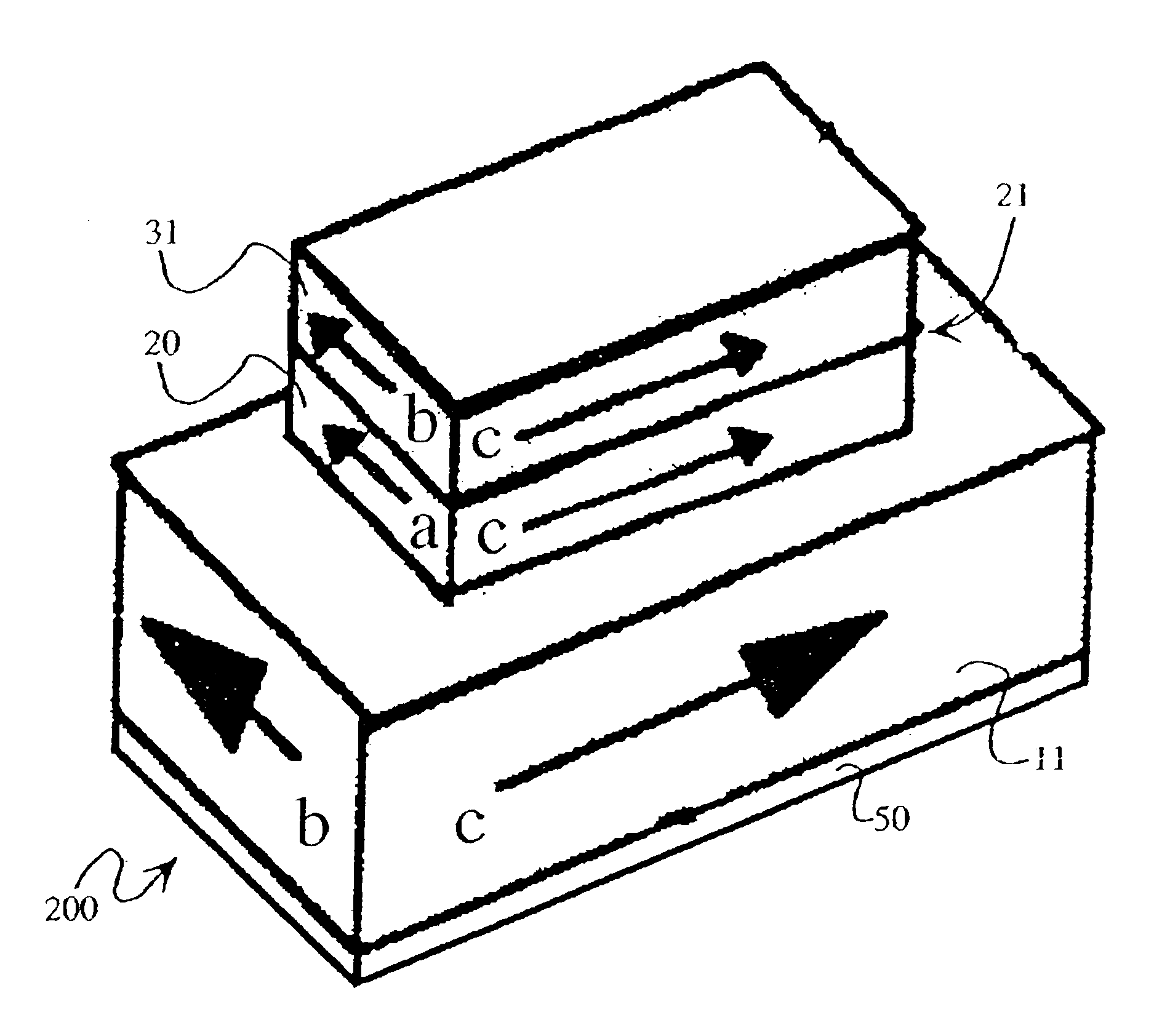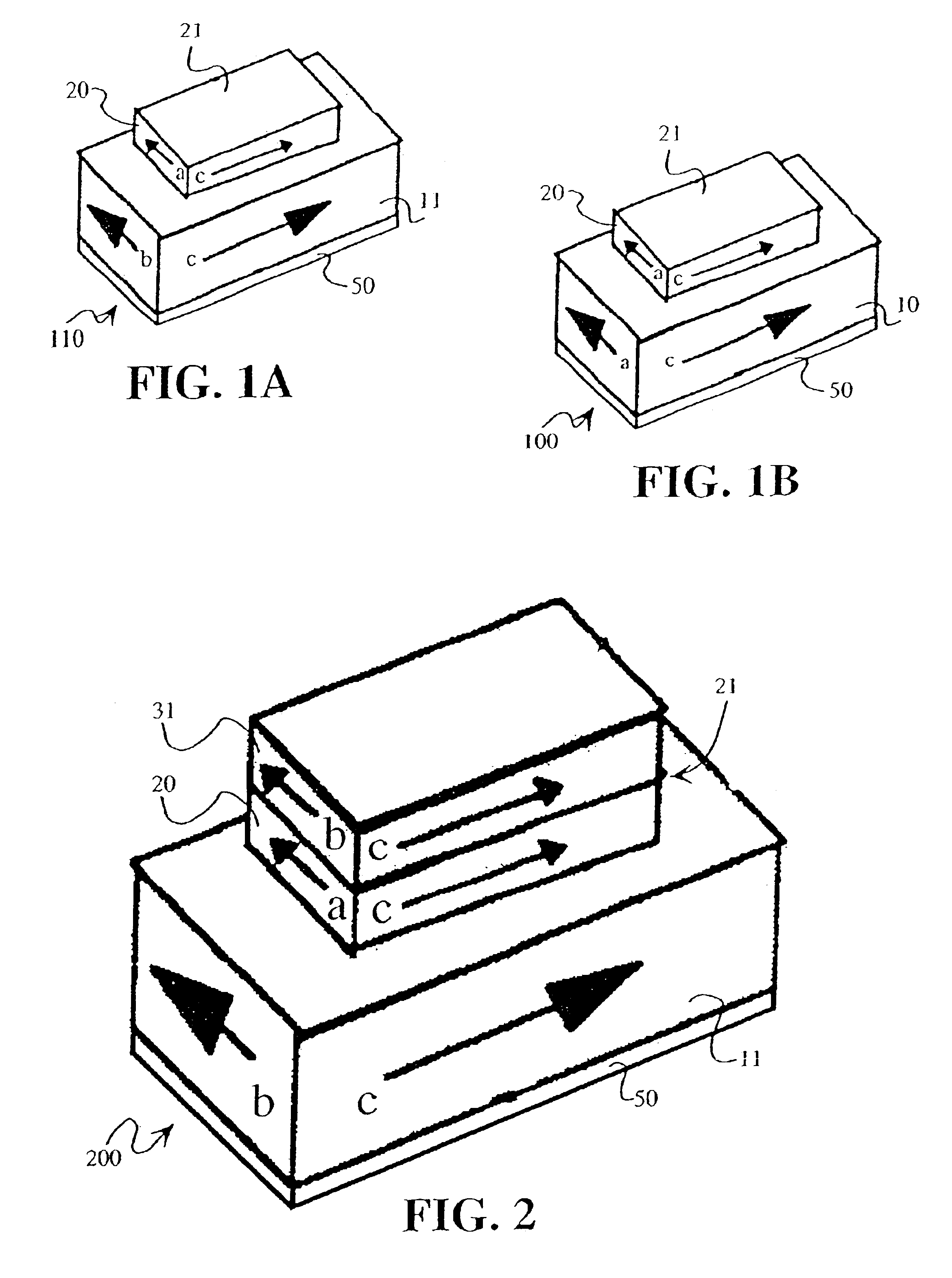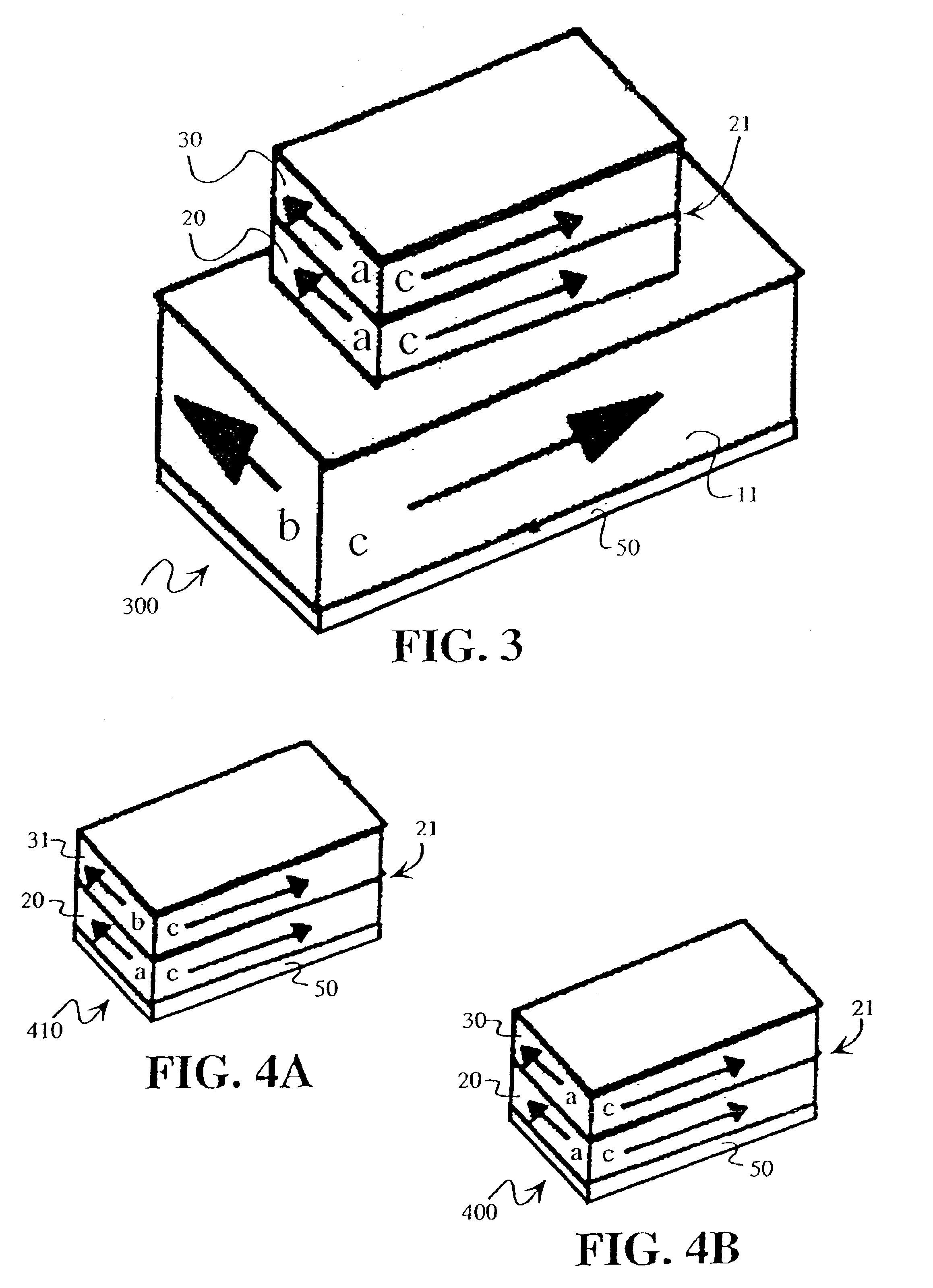Laser apparatus with improved thermal stress resistance
a technology of thermal stress resistance and laser apparatus, which is applied in the direction of laser cooling arrangement, laser details, active medium materials, etc., can solve the problems of failure, poor thermomechanical properties, and fracture, and achieve the effect of large siz
- Summary
- Abstract
- Description
- Claims
- Application Information
AI Technical Summary
Benefits of technology
Problems solved by technology
Method used
Image
Examples
Embodiment Construction
In accordance with preferred embodiments of the present invention, any crystalline, polycrystalline or glass material can be used for the lasing medium. However, a preferred lasing medium is neodymilum-doped yttrium vanadate (Nd:YVO4). Candidate substrates with higher thermal conductivities relative to YVO4 include sapphire (Al2O3), yttrium-aluminum-garnet (YAG), magnesium fluoride (MgF2), and yttrium-aluminate YAlO3, (YALO) as shown in Table 1.
TABLE 1COMPARISON OF THERMOMECHANICAL PROPERTIES OFCANDIDATE SUBSTRATES AND PREFERRED LASINGMEDIUM MATERIALTHERMALLINEARTHERMALYOUNG'SEXPANSIONCONDUCTIVITY,MODULUS (E)COEFFICIENTMATERIALW / mKGPaK−1Sapphire˜35405 5.4 × 10−5 / / a 6.8 × 10−5 / / cYAG10282 7.0 × 10−6MgF212138 8.7 × 10−6 / / a13.9 × 10−6 / / cYALO*11208 / / a 9.5 × 10−6 / / a240 / / b 4.3 × 10−6 / / b300 / / c10.8 × 10−6 / / cYVO45150 4.4 × 10−6 / / a 11 × 10−6 / / c*Space group Pbmn as defined in M. J. Weber, et. al., Appl. Phys. Lett., vol. 15, pp. 342-345 (1969). This definition is known to those skilled in the ...
PUM
| Property | Measurement | Unit |
|---|---|---|
| thickness | aaaaa | aaaaa |
| total thickness | aaaaa | aaaaa |
| thermal expansion coefficient | aaaaa | aaaaa |
Abstract
Description
Claims
Application Information
 Login to View More
Login to View More - R&D
- Intellectual Property
- Life Sciences
- Materials
- Tech Scout
- Unparalleled Data Quality
- Higher Quality Content
- 60% Fewer Hallucinations
Browse by: Latest US Patents, China's latest patents, Technical Efficacy Thesaurus, Application Domain, Technology Topic, Popular Technical Reports.
© 2025 PatSnap. All rights reserved.Legal|Privacy policy|Modern Slavery Act Transparency Statement|Sitemap|About US| Contact US: help@patsnap.com



